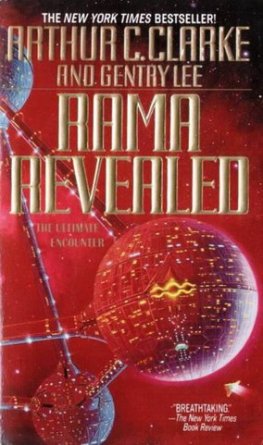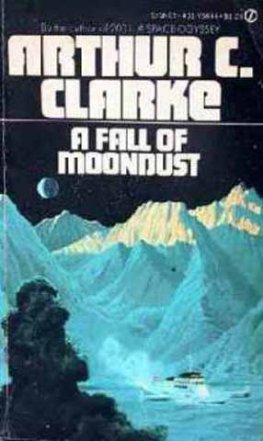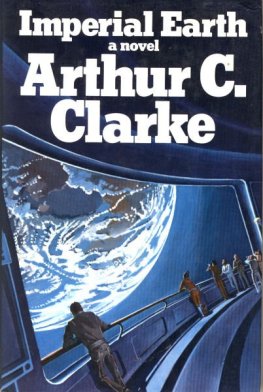The Lost Worlds of 2001
by Arthur Charles Clarke
Behind every man now alive stand thirty ghosts, for that is the ratio by which the dead outnumber the living. Since the dawn of time, roughly a hundred billion human beings have walked the planet Earth.
So began the novel 2001: A Space Odyssey when it was published in July 1968. But the first version, four years earlier, had started like this.
Between the first and last decades of the twentieth century lay a gulf greater than the wildest imagination could have conceived. It was the gulf between gunpowder and nuclear bomb, between messages tapped in Morse and global television from the sky, between Queen Victoria, Empress of India, and Kwame Chaka, Supreme President of the African Federation. But above all it was the gulf between the first hundred-foot flight at Kitty Hawk , and the first billion-mile mission to the moons of Jupiter. All of these things, ages apart in terms of culture, lay within the span of that one incredible century.
The thunder of doom had barely ceased to roll above Eniwetok Atoll when the first Sputnik rose beeping into the sky. Across the constellations moved stars that no astronomers had seen before, and as the ancient dust of the Sea of Rains received the first emissary from Earth, the long loneliness of the Moon was ended forever.
Barely a moment later, as the universe counts time, Man followed his messengers into space. Project Apollo, dominating the '70's like a bloodless war, was to pass into history, with all its triumphs and tragedies. After that, nothing would ever again be the same. When men raised their eyes to the Moon, they would know that their comrades were looking down at them. And they would remember that there were some whom Earth could never reclaim, as it had gathered back all their ancestors since the beginning of time. These were the voyagers who had failed to reach their goals, but had won instead the immortality of space, and were beyond change or decay.
Before the '70's had ended, the first permanent colony had been established on the Moon. The cost of space travel had been slashed tenfold, and would be cut tenfold again with coming of nuclear power. The brief age of the rocket dinosaurs, each capable of but a single flight, was drawing to its close. Instead of the thousand-ton boosters whose bones now littered the Atlantic deeps, men were building far more efficient aerospace planes-giant rocket aircraft which could climb up to orbit with their cargoes, then return to Earth for another mission. Commercial space flight had not yet been achieved, but it was on the horizon.
Only a few percent of the Moon's millions of square miles had been thoroughly explored, and the detailed examination of its vast wilderness might take centuries yet. But no one believed that it held any more surprises; it was hostile but familiar territory, and the home of more than a thousand men. The real frontier was far away, in the cold night beyond the path of Mars, the searing day inside the orbit of Venus.
Herald of the dawn, star of evening, Venus had been the first bitter disappointment of the space age. Even after Mariner II had reported the furnace heat of the eternally hidden surface, there were some who had hoped that the instruments might be wrong. But now, too many probes had been lost in the howling hell of the Cytherean atmosphere for any optimism to remain. Venus was dead; perhaps one day men would bring her to life, but that would be in the far, far future, with the aid of technologies yet unborn.
There remained Mars, source of so much mystery and romance, perhaps the only other home of life in the Solar System. After heartbreaking failures, a TV scanner was landed on the planet, and the whole world peered from forty million miles away, through a single mobile eye rolling jerkily across the desolation of the misnamed Lake of the Sun.
No one who saw will ever forget that first encounter between Martian and machine. Undramatic, absolutely silent, it was one of the great moments of history. Advancing slowly on its broad balloon tires, its vision turret rotating continuously, the exploring robot moved with mindless purpose over a dry, dusty plain. It was on its own, beyond aid or advice from Earth. The scenes its makers were watching were already four minutes in the past: any orders they might send, though racing at the speed of light, could not reach Mars until as many in the future.
The plain was covered with large, spherical boulders, and the robot was rolling straight toward one. Its builders were not worried; the machine's obstacle-detecting skirt would warn it before there was danger of collision, and it would automatically turn off at a right angle. That was the theory; what happened was somewhat different.
Before the robot could reach it, the boulder moved. It heaved itself off the ground on a myriad stumpy legs, crawled slowly out of the track of the advancing explorer, and settled down again. As it plunged forward, unaware of the consternation it was causing on Earth and Mars, the robot disturbed two more of the boulders; then it was through them, and encountered no others until, ten hours later, it became trapped in a canyon and continued to radio back maddeningly repetitious views of bare rock until its batteries failed.
But it had done its work; it had detected life on Mars life, moreover, of a fairly advanced form. Whether animal, vegetable, or neither, was a question that would not be answered for years-until the first expedition reached the planet in the mid-80's.
The early explorers knew that they would find life: they could only hope that they would find intelligence. But Mars has as much land area as Earth-for though it is a small world, it has no seas. Even to map the planet adequately would take decades; to learn all its secrets would be the work of centuries.
The main Martian life-forms-the "roving stones" browsing on the mineral deserts, the leechlike predators that hunted them in the desperate battle for existence, the yet fiercer parasites that preyed on them-showed only the dimmest flickers of intelligence. Nor was there any sign that these were the degenerate survivors of superior creatures, Mars, it appeared certain, had never been the home of Mind. Yet there were still-many who hoped that somewhere in the endless crimson deserts or beneath the frozen poles, or sealed in the eroded hills there might yet be found the relics of civilizations that had flourished when the giant reptiles ruled the Earth. It was a romantic dream, and it would be slow to die.
Beyond Mars, there were greater worlds, and mightier problems. Enigmatic Jupiter, with a thousand times the bulk of Earth, teased the minds of men with its mysteries. Perhaps there was life far beneath those turbulent clouds of ammonia and methane, thriving in the hot darkness at pressures unmatched in the deepest terrestrial seas. If so, it would be as unreachable as another universe; for no ship yet imagined could fight its way down through that immense gravitational field, or withstand the forces that were raging in the Jovian atmosphere. Some robot probes had been launched on that fearful journey; none had survived.
One day, perhaps in the early years of the new century, there would be manned expeditions to the moons of Jupiter-to Io, Europa, Ganymede and Callisto, the beloved of the father of the gods, large enough to be called planets in their own right. But there was so much to do nearer home, with the buildup of the lunar colony and the establishment of a bridgehead on Mars, that the outer worlds must wait. Though there would be robot fly-by missions to all the giant planets, and even out into the comet-haunted darkness beyond Pluto, no men would travel on these lonely flights.
As for voyaging outside the Solar System, to the still undiscovered planets of other stars, few scientists believed that it would ever be possible. At the best, interstellar travel was certainly a dream of the very distant future, of no practical concern during the first few centuries of space flight.













